The pheasant-tailed jacana, found in tropical Asia, is known for its long tail in breeding plumage. It forages on floating plants and is polyandrous, with females courting multiple males. Nests are built on floating vegetation, and the male incubates the eggs. Chicks freeze when threatened.
The monotypic genus Hydrophasianus includes the pheasant-tailed jacana (Hydrophasianus chirurgus).Their favorite habitat is small lakes, where they walk on floating plants using their enlarged toes and nails, a feature shared by all other jacanas. As they forage mostly for invertebrate prey, they may also swim or wade through water to reach their bodies.
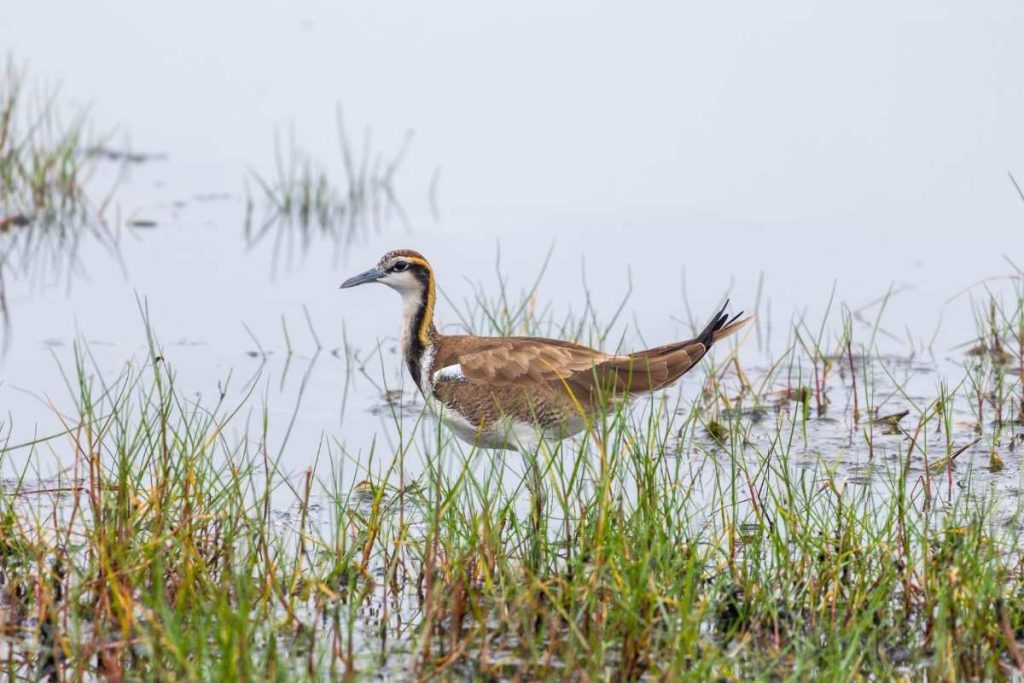
Watchful Beauty Navigating through the marsh with elegance.
They are the only jacanas with distinct breeding and non-breeding plumages that move over great distances. Including the tail streamers, it is the longest species in the jacana family. The large center tail feathers that gave the bird its name are indicative of its breeding plumage.
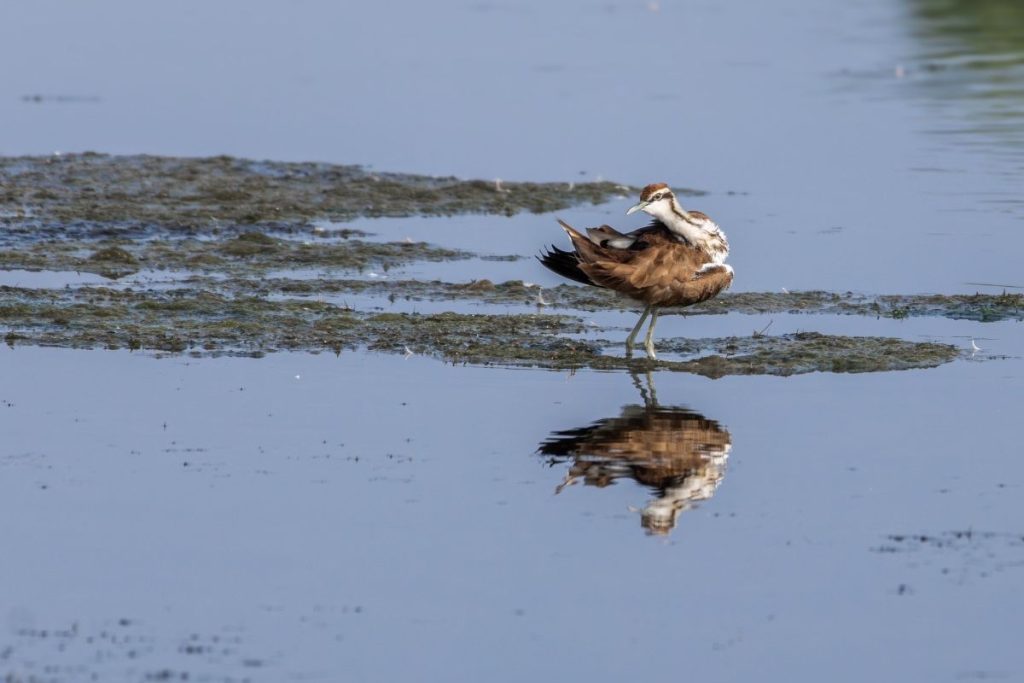
Watchful Beauty Navigating through the marsh with elegance.
The pheasant-tailed jacana shares a similar range with the bronze-winged jacana and is also found in Sri Lanka. It breeds in tropical regions of India, Southeast Asia, and Indonesia, inhabiting lakes with floating plants. Its primary food sources are insects, mollusks, and other invertebrates from the plants or water’s surface.
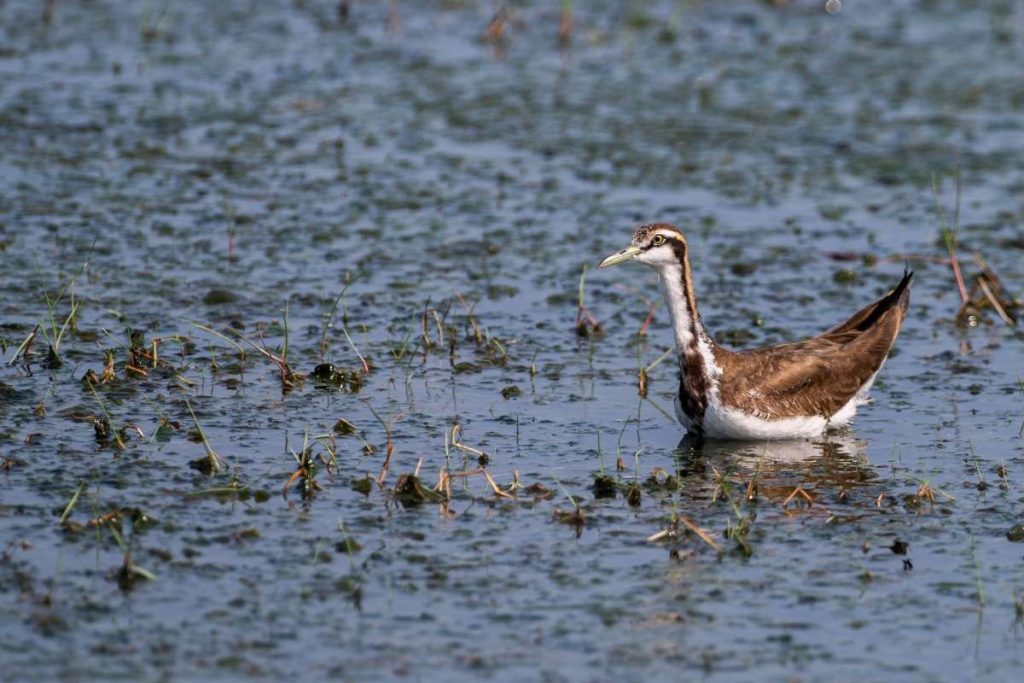
Wetland Majesty Standing still, blending with the wetland’s calm.
During the wet season, this jacana breeds on floating plants, from June to September in southern India. It is polyandrous, with a female possibly laying up to 10 clutches fostered by different males. The female courts males with calling and flight displays. She builds her nest on floating vegetation with a depression in the middle, laying four glossy, dark-olive-brown eggs, sometimes light sea-green.
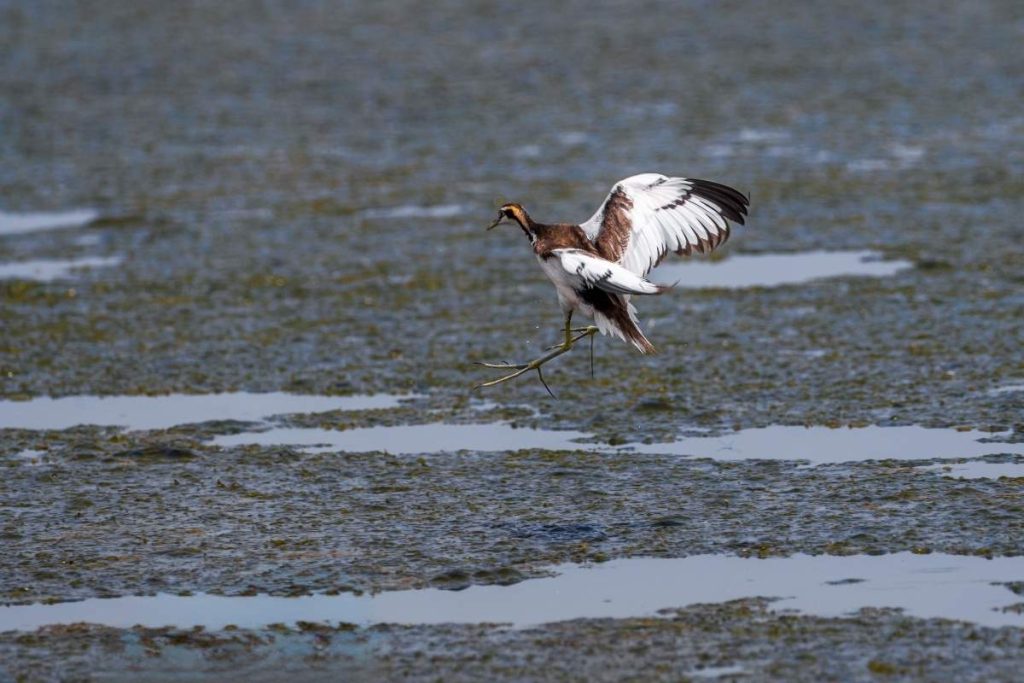
Peaceful Glide Pheasant-tailed Jacana dances across tranquil wetlands.
The female lays the eggs in the mornings at 24-hour intervals. Removing an egg at the one- or two-egg stage destroys the nest, prompting the female to replace it, but removing an egg at the three-egg stage does not. Once the male starts incubating the clutch of four, the female leaves to court another male. The male incubates the eggs for 26 to 28 days. During the first few days of incubation, the female protects the nest by flying at any water birds that approach too closely.
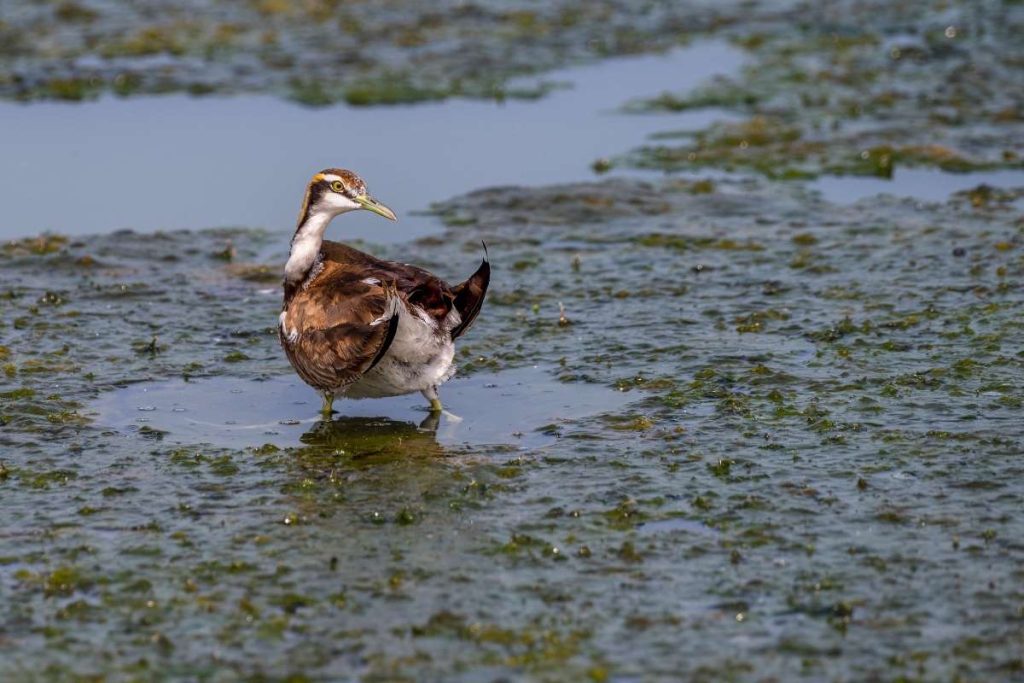
Intent Focus With patient focus, the Jacana observes right.
In close territorial conflicts, they lock bills and attack with both wings.Males rest at the nest during the hottest part of the day and forage in the morning and afternoon. When threatened, the chicks freeze, lying partially immersed with only their bills visible.
Copyrights : All the photos and texts in this post are the copyright of John Thomas and Creative Hut Institute of Photography and Film. Their reproduction, full or part, is forbidden without the explicit approval of the right owners.


